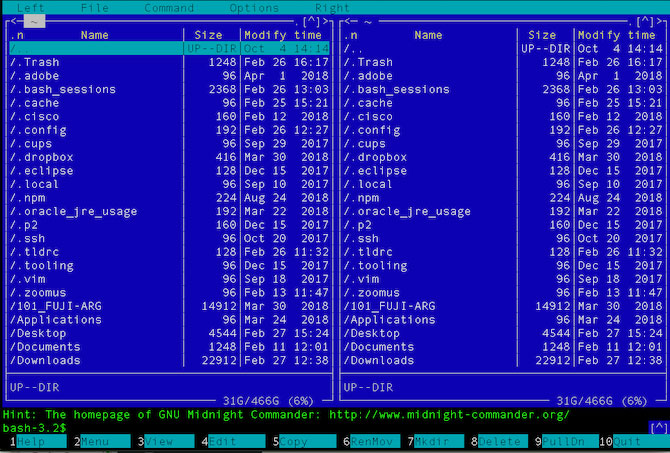

- Find large files mac os x terminal how to#
- Find large files mac os x terminal software#
- Find large files mac os x terminal zip#
- Find large files mac os x terminal free#
- Find large files mac os x terminal windows#
How to find the largest files on your Mac using Finder: Find Large Files on Mac via Finderįinder offers a built-in method for users to find large files through the Spotlight search.

How To Check Storage On Mac: 5 Ways Available.
Find large files mac os x terminal free#
Here, you can directly find out how much free storage is left and how much space is used by different categories.
Find large files mac os x terminal software#
You still have chance to recover them the following software is worth a try.įree Download #1. However, please don’t worry too much if your important files are lost from Mac due to unknown reasons.

Tip: You should be very careful when you try to find largest files Mac to avoid accidental actions like accidental deletion. So, how to find largest files on Mac? If you don’t know the answer, the following content will be very helpful. Besides, if you need a large file but forget the exact name, you can list all the large files on your computer to find out. In this case, you’ll need to find the large files and delete the unnecessary ones to free up space. One of the common causes of this situation is low disk space. You have to wait for a while every time when importing or loading files from your hard drive. It’s a common thing to find your computer running slower than before. MiniTool offers this page to show you how to find the largest files on Mac in different ways.
Find large files mac os x terminal windows#
Too little disk space left can slow down your computer no matter it is running Windows or macOS. That’s the low down, the more common compression packages available will typically be covered in one of the above.Sometimes, you may need to find all the large files saved on your Mac hard drive so that you can delete the unnecessary ones to free up disk space. You can also use a number of different formats for creating a. To Eject hdiutil eject /Volumes/archive_name/ To create hdiutil create -format UDZO -srcfolder folder_to_compress archive_name.dmg This one is macOSnative only – for a GUI interface use /Applications/Utilities/Disk Utility – for command line use: To extract gunzip archivename.gz DMG – macOS Only To compress tar -jcvf archive_2 folder_to_compress To extract tar -zxvf archive_ TAR.BZ2 – Cross PlatformĪ variation on TAR GZ but with better compression than both tar.gz and zip. To compress tar -zcvf archive_ folder_to_compress
Find large files mac os x terminal zip#
Second up is TAR, an old favorite on Unix/Linux – you add the GZ for the compression – compresses tighter than zip ds store files, use the “-X” option in the command so: zip -r -X archive_name.zip folder_to_compress TAR.GZ – Cross Platform If you want to make a zip without those invisible Mac resource files such as “_MACOSX” or “._Filename” and. To compress zip -r archive_name.zip folder_to_compress ZIP – Cross Platformįirst up is ZIP one of the most commonly used compression techniques used across all platforms Here are some built-in compression applications you can use including zip, tar, gz, bz2, gz and dmg. A compressed file which contains files and folders is generally referred to as an archive. The default command line application interface in macOS is the Terminal and is stored in /Applications/Utilities.įile and folder compression saves on file size and ensures the contents are captured and delivered or stored as one monolithic file. Since macOS is based on Unix there are a number of ways to compress files and folders within the filing system using Unix based application code, below are a few options using the Terminal or command line interface (cli).


 0 kommentar(er)
0 kommentar(er)
